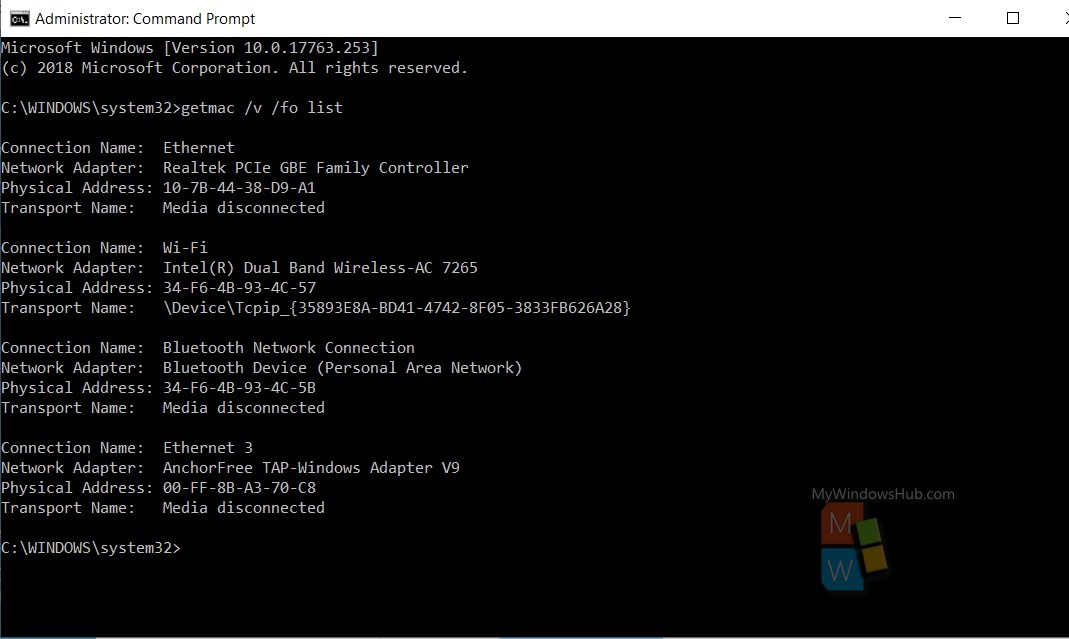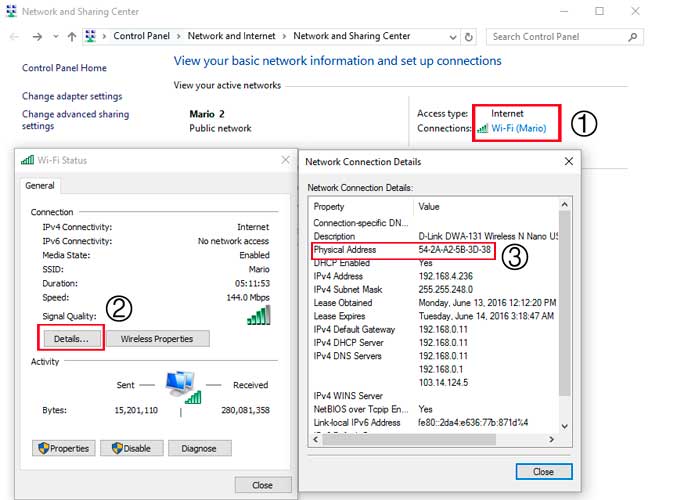

Select System Settings from the HOME menu.If not, call the Geeks: 1-85! Game Consoles Nintendo Switch
Mac address lookup device type how to#
If you cannot find your device below, Google " How to find the MAC address of a " and you should be able to find instructions. Below is a list of common devices with instructions on how to find the MAC address by navigating system menus. If you cannot find the label or it is not printed on the device, you will need to go through the device's system menus to find it. To find the MAC address quickly, it is recommended that you physically inspect your device for this label. Most manufacturers will print the MAC address on a label on the back or the bottom of the device (but not always). These devices can cause issues with performance across the network.

Home routers, wireless access points, hubs, or switches, whether wired or wireless, are not supported. Home routers, wireless access points, hubs, switches These devices and software/hardware configurations are meant to watch traffic and are therefore in violation of EKU's Acceptable Use Policy, as well as many laws. Sniffers or network analyzers of any kind are not permitted. These devices often use GPS which can be a difficult signal to capture on campus and often encounters compatibility issues with the University's network security equipment. IP telephones and 3G/4G range extenders are not readily supported. While you may find these devices work in some areas of the campus at certain times, there is no guarantee of their functionality. We are currently working to eliminate this limitation. These devices - such as the AppleTV, Sonos, and Chromecasts - are not currently supported on enterprise-class networks. Devices using Apple Talk, Bonjour, mDNS Sonos, and Chromecasts If you have one of these printers, please turn off the wireless and connect it directly to your computer via its supplied USB cable while on campus. Personal wireless printers that broadcast a network name for a connection are not permitted. Its not 100%, but it can usually identify what sort of device/os it is.Certain devices are either restricted or unsupported on our network. Nmap can also have a go at identifying the device for you (as you can see above). MAC addresses are indeed issued by company, if you have the Mac address, we can psuedo identify the device. OS CPE: cpe:/o:linux:linux_kernel:2.6 cpe:/o:linux:linux_kernel:3 MAC Address: EC:17:2F:F3:0F:A7 (Tp-link Technologies CO.) Nmap scan report for router.lan (192.168.1.1) To scan for all open ports at a given ip: nmap -p0-65535 Readily available for most operating systems, even the lesser ones like windows. I usually use nmap to scan an ip for open services. Is there some other way of connecting to it? Perhaps running a port scanner, to see which ports are open? Perhaps using telnet or SSH? I (shockingly) don't have much experience in this department. Is there some type of MAC Address global lookup table, which would tell me who the manufacturer is and/or the type of device? This might give me a clue as to what it is, and where to look for it.

And it won't help at all if the device is wired into the network. It also means a ton of work to reconnect all our other wireless devices. This will just disconnect the device, but won't help me find it, unless someone comes to me with a complaint, or something important breaks.

Change the SSID or key on the wireless network, in case the device is connected wirelessly. Some ideas that I've had, which I haven't gotten down to testing: Switches do not show up on a trace route (as far as I am aware), only routers. Doing a trace route is pointless, because the device is inside a very large network, whose only router is the one connecting the network to the internet. Trying to browse to the device on port 80 through a web browser yields nothing. It doesn't have a NetBIOS name or hostname. I have blocked the device from accessing the internet through our firewall, but it was showing zero internet traffic even before doing this. It seems to have a statically assigned IP address, as the address has remained the same for a long time, and is outside of the DHCP range which is handled by the router/firewall/gateway. The network is quite big, and trying to physically locate the device is a mission. So I have an unknown device on our company network, I and have no other information about it, other than it's IP address and MAC address.


 0 kommentar(er)
0 kommentar(er)
